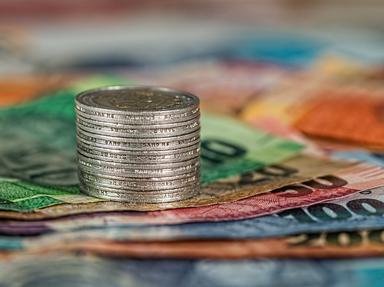Quiz Answer Key and Fun Facts
1. Before they began producing coins, the Romans used cast bronze ingots bearing raised designs, often depicting birds or animals, as a medium of exchange. What were these called?
2. The first true coins of the Roman Republic were produced around what period of time?
3. The first silver coin issued by the Romans was called a what?
4. Around 211 b.c. a new silver coin was introduced which would continue to be minted for well over 400 years. What was it called?
5. In the days of the Republic and early Empire, the Romans usually expressed the cost of an item in terms of:
6. What was a "talent?"
7. What do the letters "S C" on a Roman coin indicate?
8. During the period of the early Empire, what was the smallest denomination of coin issued by the Roman mints?
9. All Roman coins were minted at Rome.
10. Imperial Roman coins circulated in all provinces of the Empire except:
11. During which emperor's reign was nearly all silver removed from Roman coins?
12. The standard gold coin of the early empire was the "aureus." How much gold did it contain?
13. In 312 a.d., the emperor Constantine the Great introduced a new coin to replace the aureus. What was it called?
14. The insciption "Consecratio" on a Roman coin indicates what?
15. Which emperors issued a series of coins to commemorate the conquest of Judea?
16. This Emperor, who came to power in 284 a.d., reformed the coinage and tried to institute wage and price controls.
17. Why are most coins of the Emperor Caligula rare?
18. One sometimes encounters a coin bearing the portrait of a Roman emperor, but with inscription in Greek instead of Latin. What are such coins called?
19. Whose portrait never appeared on a Roman coin?
20. If you wanted to purchase a common type silver coin of the Emperor Gordian III (238-44 a.d.), in pristine mint condition, you should expect to pay (now, in 2002):
Source: Author
daver852
This quiz was reviewed by FunTrivia editor
bloomsby before going online.
Any errors found in FunTrivia content are routinely corrected through our feedback system.
